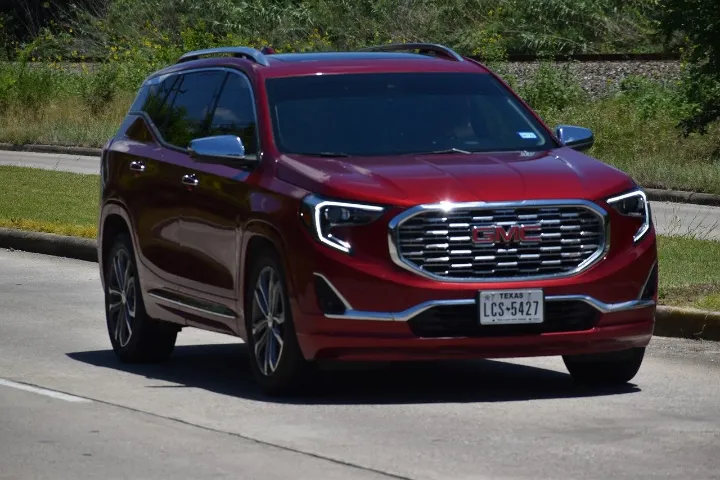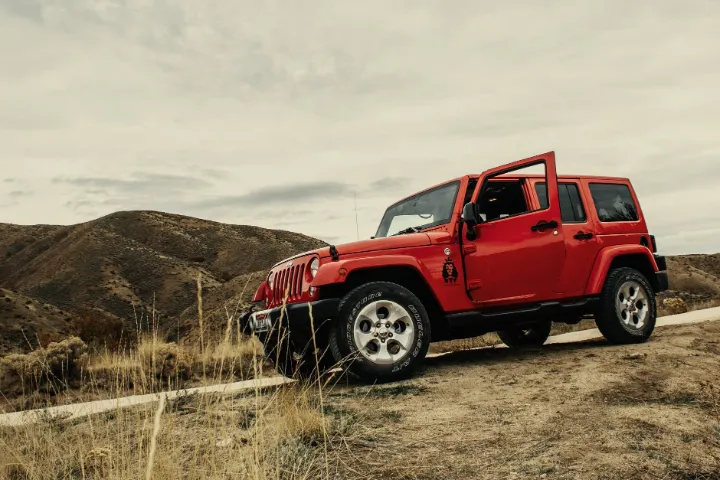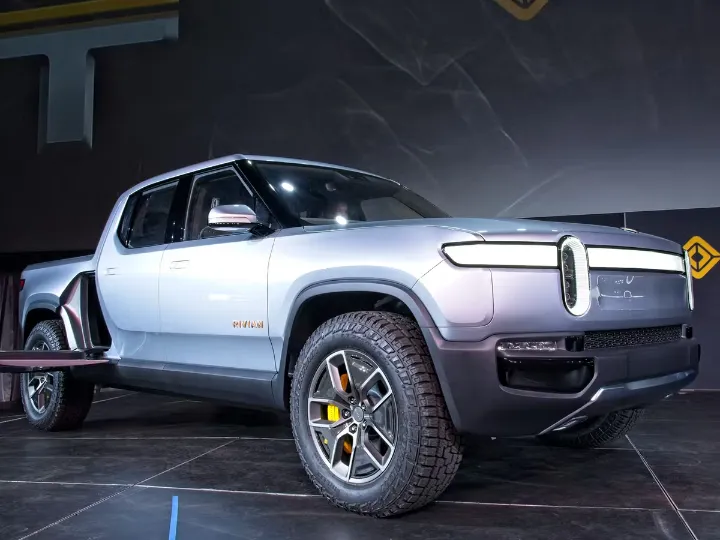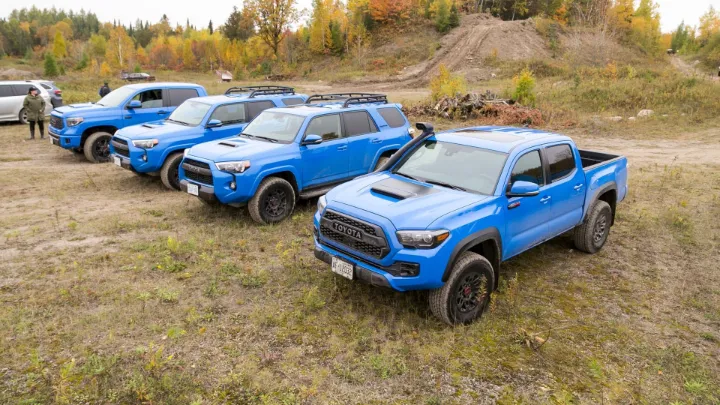Pickups and SUVs rule the road, from the Toyota Tundra to the Jeep Grand Cherokee 4xe. Because of their spacious cargo room, cutting-edge technology, and tried-and-true characteristics, they began to rule the entire world after conquering North America. But is there a difference between truck and SUV, or is an SUV a truck?
There might not be much difference between truck and SUV to the untrained eye. These vehicle kinds are not interchangeable, though. Trucks normally have an uncovered cargo space while SUVs are completely enclosed, even though both vehicles feature high-performance engines, long wheelbase, and roomy cabins.
As the design and manufacturing of automobiles continue to advance, these distinctions are becoming increasingly hazy. Some SUVs today imitate pickup trucks’ capabilities. Similarly, several trucks include sophisticated aesthetics and cutting-edge technology formerly exclusive to sport utility vehicles.
What Qualifies A Car As An SUV
Confusion about the difference between truck and SUV (let’s stick with pickup trucks) is reasonable. A hybrid vehicle is what an SUV, or Sport/Suburban Utility Vehicle, is defined. SUVs fused the intention of fusing the advantages of a pickup truck, passenger car, and minivan into a single vehicle. It wouldn’t surprise me if an SUV shared certain traits with a pickup truck.
Nevertheless, the following is a non-exhaustive collection of characteristics that might help an SUV stand out from the other vehicle segments:
- Superior engine
- All-Wheel Drive (AWD) system
- Improved fuel economy and fewer emissions
- Elevated ground clearance
- Increased wheelbase
- An articulated axle
- Suited for off-road use suspension
- Extra-large tires
- Seating arrangement and tall passenger cabin
- Differential locks
- Unibody or body-on-frame structure
- Modern style and design
The unibody structure is the most distinctive feature of SUVs. It is intended to reduce weight while avoiding negative effects on the vehicle’s off-road capability. It features a two-box construction, with compartments for the passenger and freight in the back and the power mill up front. Depending on the brand and model, a pickup truck may have 2 or 4 doors.
In the past, 2-door models of SUVs were the only ones offered. However, by 2010, the sector had adopted the 4-door layout that was more typical of other car classes. The engine of an SUV must be more powerful than that of a passenger car because of the vehicle’s weight and size.
The all-wheel-drive system is designed to give the driver better control over the vehicle, especially in off-road conditions. The system sends power to all four wheels, which helps the SUV to move forward on slippery or uneven surfaces. The extra-large tires of an SUV provide better grip and stability, while the elevated ground clearance allows the vehicle to clear obstacles more easily.

The main difference between truck and SUV is the body structure. SUVs have unibody construction, while trucks have a body-on-frame construction. This means that SUVs are typically lighter and more fuel-efficient than trucks. However, trucks have the better off-road capability and can tow more weight.
In general, SUVs are better suited for city driving, while trucks are better suited for off-road conditions.
Primary SUV Types
The following are the several categories of SUVs based on their total size rather than on their appearance or configuration:
Subcompact And Mini-SUVs
These little cars, which seem smaller than the Mini Countryman, are highly well-liked in nations where expensive big automobiles are taxed heavily. Top contenders in this subsegment include Suzuki, Jeep, Nissan, Volkswagen, and Toyota.
Small/Compact SUVs
These SUVs are easy to operate and park and have a typical size compared to European C-segment passenger vehicles. They make excellent everyday commuter and family cars because of the roomy cabins. With their top-notch 2021/2022 launches, automakers like Hyundai, Honda, Ford, Mazda, and Subaru (and many others) are leading the charge.
Fact: The Kurogane Model 95, a Japanese SUV built for the military from 1936 to 1944 and employed as a topographical reconnaissance vehicle, is known by the moniker “All-Wheel Drive.”

Medium-sized SUVs
These SUVs are alluring to commuters and adventurers alike because of their practical size and impressive all-terrain capabilities. While some of the current versions are feature-rich and have a sophisticated appearance similar to luxury SUVs, several older models still have pickup trucks. They fall right in the center of the pricing range.
The most popular midsize SUV models include the Honda Pilot, Toyota Highlander, Ford Explorer, and Chevy Blazer.
Larger SUVs
These cars were first created using the full-size pickup truck chassis, as the name indicates. Some do, however, already get their specific platforms today. With this SUV class, their expanded length has stayed the same, giving them a roomier interior and load capacity. On the other hand, the height has been increased to provide higher ground clearance.
The additional space has been used for the third row of seats, perfect for larger families or groups. You will find that these SUVs also have better-towing capacities than regular cars.
Longer-Trail SUVs
The Jeep Wagoneer & Ford Expedition from 2022 are ideal illustrations of long-wheelbase SUVs. This sub-primary segment’s distinction from a full-size SUV is that it has an overall length of at minimum 17.1 feet (205 inches). Due to their considerable passenger and storage space, these long-bodied sport utility vehicles are most popular in North America.
SUV Crossovers
CUVs are occasionally viewed as the odd out of all the many types of SUVs since they are built on a passenger-car base. Compared to other SUVs, they represent more than 50% of the entire SUV market in the US. CUVs have far more aesthetically pleasing interiors and more comfortable rides but are less capable of towing and off-roading.

Fact: The first CUV was the 1934 Opel Geländesportwagen, modified two years later to be more suitable for off-road use.
Are SUVs Regarded As Trucks
Certain full-size SUVs are comparable to that of a typical pickup truck. For instance, the total measurements of a 2021 Jeep Gladiator are 18.17×6.15×6.25 feet (218×73.8×75 inches, L x W x H). Based on dimensions, you could assume that the difference between truck and SUV is much messier (if not nonexistent). Sadly, that wouldn’t be accurate.
A pickup truck’s cabin has always been enclosed while the cargo area was open with short sides and a tailgate, in addition to its length, breadth, and height. Even if SUVs had the same size and payload as pickup trucks, they could never be referred to as such. The main reason is that they have an enclosed cabin, while a pickup truck has an open cargo area.
SUVs come in all shapes and sizes, from the very small to the extremely large. Most people picture the mid-size or larger models when they think of SUVs. Examples of mid-size SUVs would be the Honda CR-V, Toyota RAV4, and Ford Escape. Large SUVs would be vehicles such as the Chevrolet Tahoe, GMC Yukon, and Ford ExpeditionAn SUV is a four-wheel drive built on a truck chassis.
An SUV typically has a different frame from the body, allowing for more ground clearance and a higher ride height. SUVs usually have taller, boxier bodies than sedans or hatchbacks, which provides more headroom and cargo space. The term “SUV” stands for “sport utility vehicle.” SUV is a broad category that can include anything from a small crossover to a large truck-based vehicle.
Pickup Trucks – An Overview
The original pickup trucks, which date back to 1902, were only offered as a chassis, with the bodywork being added separately by third parties. Later versions of the concept incorporated carrying trucks with 3/4 and 1-ton weight capacities, a cab, and a wooden body. Later on, a windshield & windows were added to the interior, and the engine was also enhanced.

The pickup truck was still mostly used for labor or farming. Consumer usage of these light-duty vehicles did not change significantly until General Motors launched pickup models for ownership in the 1930s. When end-users started buying these vehicles for lifestyle/recreational purposes rather than as a workhorse in the 1950s, this shift in perspective became clear.
The popularity of “crew cabs”—possibly the first 4-door pickup type to ever be mass-produced—rose in the late 1950s. Since then, pickup trucks’ general idea and design have advanced dramatically, giving rise to the purpose-built behemoths we have seen on the market today.
Various Pickup Truck Types
Pickup vehicles stand out because of their enclosed cabin and open cargo area. However, since recent-year SUV models are constructed similarly, it is now more perplexing, if not impossible, to tell the two cars apart. Understanding the many sorts of trucks will be very beneficial. Here is a list to help you get started. In this section, I’ll refer to pickup trucks by the abbreviation “PT”:
Small PTs
This truck categorization might refer to a truck with a short cargo bay or one that resembles a slightly raised sedan, based on vehicle manufacturer and market. Or it could refer to a pickup truck that is so light that it can only be used for urban driving and has low ground clearance. Compact trucks often have 2WD driveline modes and tiny gasoline-fed engines.
The 4-cylinder engine is a popular choice for these trucks. On the other hand, SUVs are built on a truck chassis but have the body of a wagon or minivan. They usually come in 4WD configuration and have beefier engines than compact trucks since they’re meant for hauling people and cargo simultaneously.
Light-Duty PTs

Light-Duty PTs are equivalent to mid-range SUVs in terms of features. But because of its predominately 2WD system, they are designed better for on-road over dirt-road uses in terms of drivability. They are capable of towing kayaks, small to larger boats, and trailers. However, their standard suspension would not support the huge weights typical of bigger vehicles.
If you need to carry more weight or use your vehicle off-road more often, then a Light-Duty PT is not the right choice.
Moderate-Duty PTs
These cars, comparable to tiny SUVs, provide simple handling and lots of room for freight and small families. They can easily be transported outside of town and parked within garages. The Toyota Tacoma exemplifies this sub-type.
Light-Duty PTs
Large-displacement power mills distinguish these trucks in addition to a sizable dump bed and cabin. The vehicle’s outstanding factory suspension also allows it to tow far bigger weights than other models in its class.
Opulent PTs
The fit and finish of this pickup truck category define it. These four-wheelers feature opulent interiors, a bevy of technology and creature amenities, and a sleek, stylish appearance compared to pickups. They can range in size from a little light-duty vehicle to a large extended version. They are generally available in both two- and four-wheel drive.
PTs In Full Size
According to its title, a full-size truck employs a V8 engine most often and has a larger cabin. It often has AWD or 4WD settings and has a greater ground clearance than most pickup-truck types to complement its off-road capabilities. An SUV has a lower ground clearance than a full-size truck and is not as capable of going off-road.

Its off-roading capability and other features make it the most costly truck variant. On the other hand, SUVs have a unibody construction and use a V6 engine. They are mostly two-wheel drive but may also come with all-wheel drive or four-wheel drive settings.
Standard Cab PTs
This style is reminiscent of the classic pickup designs from the 1950s and 1960s. These vehicles featured a small amount of passenger room because they were designed to deliver work and loads in the first place. Only two persons can fit in a typical pickup truck cab (three people at most if the cabin has a bench seat).
Because of this restriction, you may argue that it mimics the horse-drawn carriage in certain ways. Interestingly, some pickup truck models from this era were designed as four-door vehicles.
However, those pickup trucks with four doors were mostly used by companies and businesses rather than ordinary citizens. The term “crew cab” is still used today to describe a pickup truck that seats five or more people.
PT Crew Cabs
The first 4-door pickup truck variants may include crew cabs. The word “crew” refers to having adequate space to bring together a small number of individuals needed to complete a task. With one person in front (next to the driver) and up to three passengers in the back, the passenger layout is comparable to current taxis or cabs.
Longer Cab PTs
These pickups are smaller than crew cabs and are intended for sporadic passenger transport. Most of these cars only had two doors. Courtesy rear-hinged doors on several makes and models allowed access to the back seats.

For vehicles without this courtesy, rear doors, reaching the back seat required pushing the front seat forward—typically on the passenger side—to provide access to the back.
Cab Chassis PTs
Among the most adaptable pickups available in the light is this one. A chassis cab is simple to identify since it has a cab and exposed chassis. The aftermarket installation on the pickup truck’s rear would be up to the owner’s option. The fitting might be anything from a flat to a lifting crane to towing machinery.
1/2-Ton PTs
This sub-type, formerly connected to light-duty vehicles, refers to every pickup truck with a maximum load capacity of 1,000 lb. or half a ton. These trucks’ limited carrying capacity results from the suspension system they have in place. Urban and suburban residents who just need to transport tools and other materials to/from work are particularly fond of them.
PTs Of Three-Quarter Tons
This kind, like half-tons, was once associated with medium-duty trucks that could transport people and cargo weighing 1,500 lbs. Even though they currently have much more than the 1,500-lb restrictions that their name indicates, the category has remained with the pickup as mentioned above trucks.
Additionally, traditionally, they have been bought for work-related purposes. Therefore understanding their payload size capacity is crucial.
1 Ton PTs

These heavy-duty pickup trucks, affectionately known as the Chevelle SS of pickup trucks, have strengthened axles, springs, braking systems, and high-performance large-displacement engines. To deal with the large weights of these vehicles, some are even diesel-fed.
The Electric PTs
3 years after its prototype was unveiled at the 2018 Los Angeles Auto Show, newcomer Rivian Automotive outperformed other companies to create the first all-electric truck, the Rivian R1T, in 2021. However, the well-known producers won’t fall behind. Ford, GMC, and Tesla all released their products shortly after.
The Tesla Cybertruck, Ford F-150 Lightning, Bollinger B2, Bollinger B2, and GMC Hummer EV Edition 1 will be on the road by 2023.
PT Hybrids
Hybrids will be the next greatest thing because not all manufacturers have yet ventured into the world of completely electric automobiles. Hybrid cars, which are not just for pickup trucks, employ traditional combustion engines and electric engine technology to operate more effectively. Each OEM, including Ford, Ram, and Chevrolet, has at least 1 hybrid truck vehicle in its lineup.
Difference Between Truck And SUV: Which Should You Buy
So now you understand the answer to the question, “is an SUV a truck?” all that’s left to do is choose which one to purchase. Both vehicle kinds do have certain similarities in their advantages and disadvantages. However, each has distinct practical qualities that will be the decisive factor in your next important choice.

While that choice is entirely up to yourself, here are some more factors to think about when contrasting pickup trucks with SUVs:
Budget
Your budget is the most crucial factor to consider before any personal preferences when choosing a pickup truck, an SUV, or any other type of vehicle. A light-duty truck costs between $28,000 and $75,000, while compact Japanese SUVs typically cost between $21,000 and $30,000. These four-wheelers are pricey because of their roomy cabins and off-roading/towing skills.
Having a tough car with all the amenities would be amazing. Due to limited funds, many buyers prefer to purchase their second choice or a used model.
Application
The second important factor to consider is your planned usage of the vehicle, assuming cost is not a concern when choosing your future adventure partner.
Do you spend much time ripping and rock-crawling in the dunes? For you, full-size pickup vehicles are the ideal choice. Are your only excursions city driving and beach outings with friends? Then perhaps a crew-cab pickup or a small SUV would be a better choice.
Are you a builder and need a vehicle with a very long bed and a large cargo capacity? Any extended-length SUV or truck will be perfect for you.
Rider Comfort
Interiors, valvetrain, technology, and accessories contribute to a rider’s level of comfort while operating a vehicle. A four-wheeler that handles well has the necessary features and isn’t a gas guzzler was essential, especially if you plan to ride it more on city streets than on wilderness routes.
You wouldn’t want to use a vehicle or SUV that is too large for the narrow city streets. You wouldn’t need to be in a crew cab truck if you frequently travel in groups.
Mechanical Aptitude
This refers to both your prowess as a technician and your driving prowess. You must be a qualified mechanic employed at a sizable auto shop. You cannot, however, own a vehicle as complicated as a long-bodied SUV or pickup truck and have no troubleshooting skills. It would be wise to pick up large-size vehicles and SUVs if you are an experienced/savant mechanic or a hobbyist technician.
The ability to do simple repairs that individuals would ordinarily refer to a specialist also helps save costs. On a small truck or SUV, though, novice car owners would’ve been better served to hone their diagnostic and repair skills. That’s also if they don’t immediately require a larger car.
The Verdict: Difference Between Truck And SUV
Whether you’re an expert or novice driver, it might be difficult to distinguish the difference between truck and SUV. This information should help you to tell one type of vehicle from another. This information should assist you in choosing your future car as wisely as possible.
More significantly, paying close attention to these details guarantees you can utilize all of your soon-to-be wheeler’s potential.
